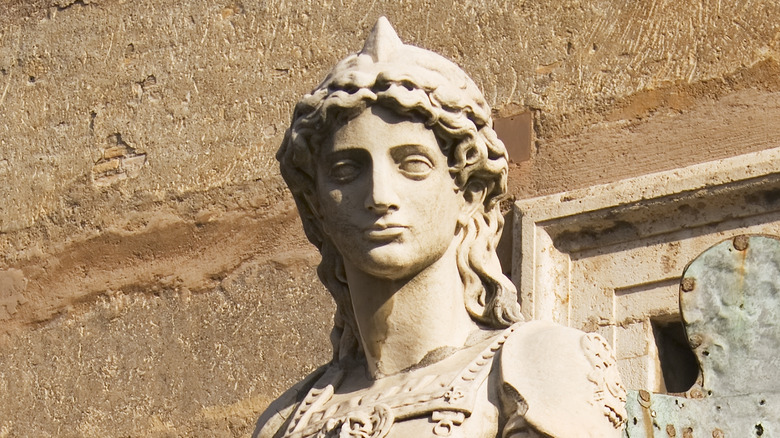The Mullet Hairstyle Is Older Than You Think
In some ways, the mullet is much, much younger than you think. Though the hairstyle is closely associated with the 1980s, the term was evidentially coined in 1994 by the Beastie Boys, who made fun of the hairstyle in their "Ill Communication" song "Mullet Head." The Oxford English Dictionary once claimed that the term dated back to a 1992 automotive magazine, but after a celebrated investigation by the podcast "Decoder Ring," the scan of the magazine in question was found to be a Photoshop hoax. That the hairstyle's name was not used before that — at least, as far as the best word historians and etymologists can tell — is simply one of the great instances of the Mandela effect.
But the hairstyle itself dates to long before you could walk into any salon, say "give me a mullet," and be understood with perfect clarity. In fact, the 'do might date all the way back to 1st century A.D., according to The Guardian.
A "senseless" and ancient hairdo
In 2018, a National Trust excavation in Cambridgeshire, England, uncovered an ancient figurine with a mullet hairstyle that archeologists initially believed was some kind of Celtic deity (via The Guardian). The depicted man appears humble enough, however, that it very well might portray an ordinary Celt or Roman during the period when the Roman Empire occupied England, according to Shannon Hogan, an archeologist with the National Trust.
"We have so few visual or written depictions from the Romans of what the native [Celtic] people looked like, so it's tempting to say he was designed based on what people looked like or what the current styles or current trends were then," Hogan said. That apparently includes a haircut that is cropped short in the front and shoulder-length in the back, though Hogan also said that the hairdo's appearance might also be the result of the time period's manufacturing constraints.
Even if the hairstyle isn't, in fact, as old as Christianity, it was likely used at some point in the Roman Empire. The Roman historian Procopius, writing in the 6th century A.D., seemed to share the Beastie Boys' frustration with the cut. "The hair on their heads they cut off in front back to the temples," he wrote, "leaving the part behind to hang down to a very great length in a senseless fashion." Sound familiar?

